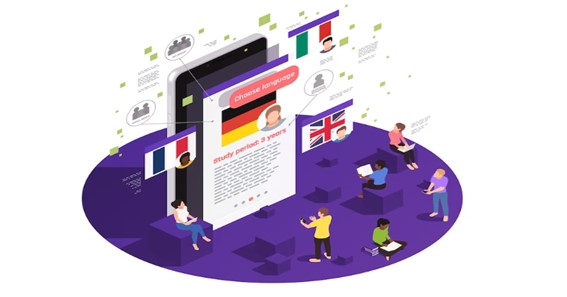Are you looking to expand your e-learning content to a global audience?
With the rise of remote work and online learning, now is the perfect time to reach learners across the world. However, localizing e-learning content can be a daunting task, especially if you don’t use the right tools and methods. In this scenario, using a cloud-based localization management platform can be helpful in overcoming the challenges of e-learning platform localization. It allows you to streamline your translation and localization process, collaborate with teams across the globe, and ensure that your content is culturally sensitive and effective.
In this article, we’ll discuss some best approaches for translating and localizing e-learning content, so you can easily expand your e-learning reach.
Identify your target audience and their language preferences
Before you start translating your e-learning content, it’s important to know who your target audience is and what their language preferences are. It will help you choose the right languages to translate your content into and ensure that your content is culturally relevant and engaging. Depending on the regions you are targeting, you must translate your e-learning platform content to their local languages accordingly. Moreover, based on the age, interests, and intentions of the audiences you’re educating, you must keep your translation tone and style relevant to their core psychologies.
Use plain language and avoid idiomatic expressions
When you translate e-learning content, focus on using plain language and avoid idiomatic expressions. However, the difficulty level of translations is subjective to the age, occupation, and education level of individuals. So, it is important that your content is easy to understand and will reduce the risk of misinterpretation. You must use the appropriate terminology for your subject matter, as some technical terms may not have an equivalent in other languages.
Click here – 5 Translation and Localization Trends for 2023
Consider cultural differences and adapt your content accordingly
While educating a group of people, you should know what goes into their minds. And the culture of your target audiences says a lot about their psychologies and mindsets. It means taking into account cultural norms, values, and beliefs that may affect how your content is perceived. Similarly, images, symbols, and colors may have different meanings in different cultures, so you need to make sure that your content is culturally sensitive.
Use professional translators and editors
You must hire experienced and professional translators and editors who are fluent in the target language and have expertise in the subject matter. It will make sure that your content is accurate and socially resonating. If you are working with multiple translators, you can bring them together on a cloud-based translation management platform. It will also promote better communication and collaboration between your translation teams.
Test your content with a representative sample of learners
Before you launch your e-learning content in a new language or culture, it’s crucial to test it with a representative sample of learners. It will help you identify any cultural or linguistic issues that would affect the credibility of your content. Moreover, it’ll allow you to make necessary adjustments to ensure your content is effective and engaging for your target audience.
Use visuals and multimedia to aid comprehension
Click here – Top cryptocurrencies that you must consider buying in 2023.
Ensure compatibility with different devices and platforms
You must confirm that the localized version of your e-learning platform is compatible with different devices and platforms. It means considering how the content will be accessed and viewed in different countries and regions and ensuring that it is accessible on a range of devices, such as smartphones, tablets, and laptops. It will allow you to reach a wider audience and ensure your content is accessible to everyone.
Keep content up-to-date and relevant
Finally, keep your localized content up-to-date and relevant. You have to regularly review and update your content to reflect changes in the industry or subject matter, along with other cultural and linguistic changes. Higher content relevancy with time ensures that your learners remain engaged and motivated.
Wrapping Up!
Translating and localizing e-learning content for a global audience can be a complex and challenging task. However, by following these best localization practices, you can make the process more efficient, effective, and engaging. With a translation solution for enterprises, you can streamline your translation and localization efforts, improve collaboration with global teams, and ensure that your content is culturally appropriate and impactful. So, whether you’re an educational institution or a corporate trainer, don’t let language barriers limit your e-learning platform reach. Invest in a robust translation solution for enterprises and take your e-learning content to learners across the world.

